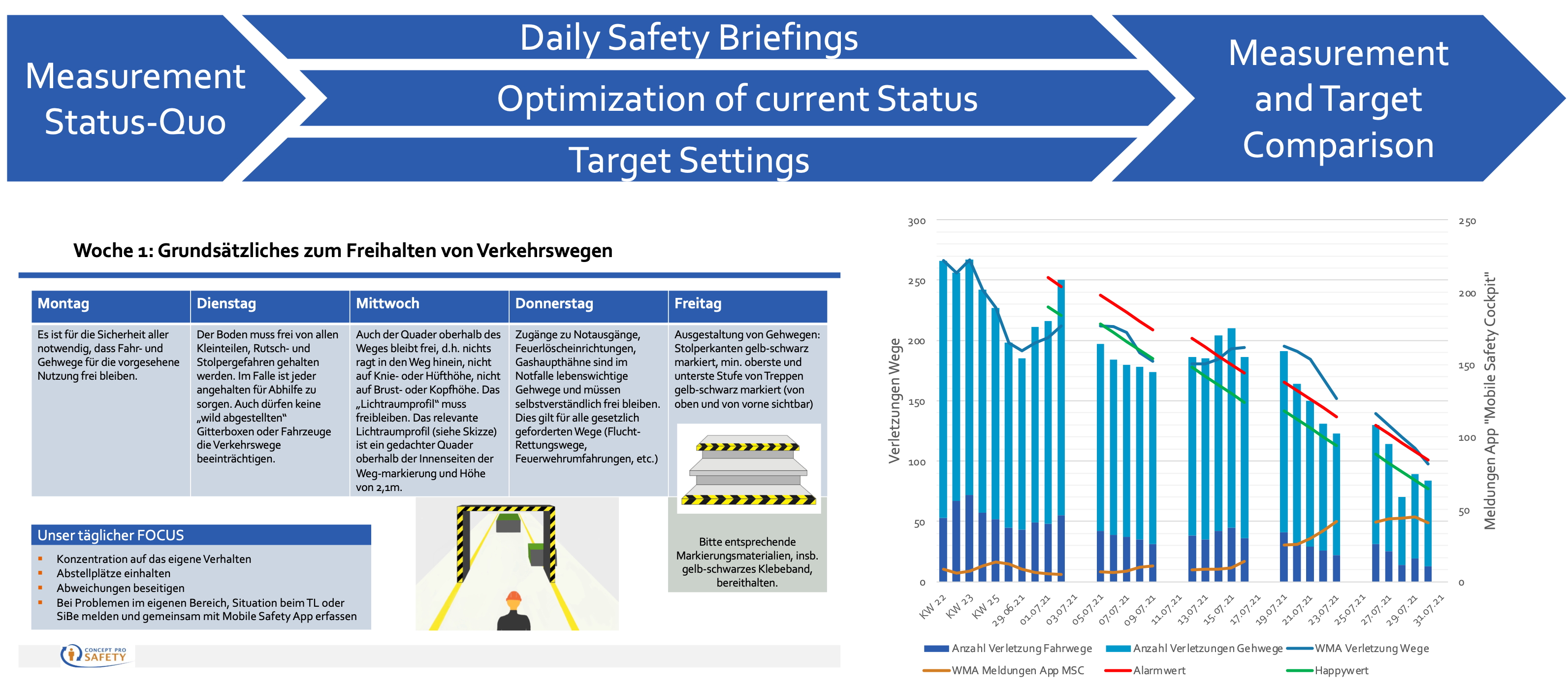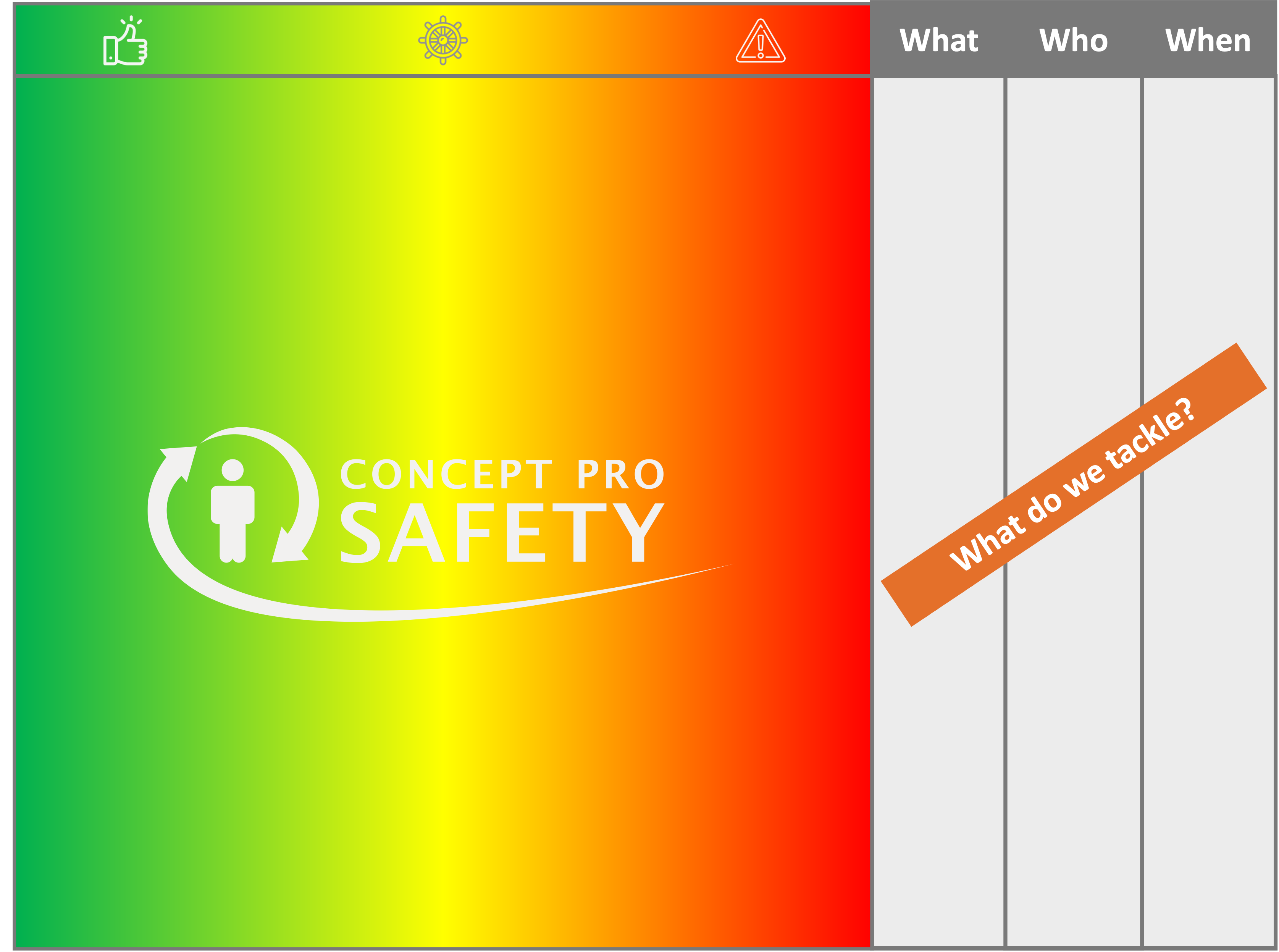Development of an active Safety Awareness
How can you effectively influence safety awareness in general and specifically for individual risk situations or sustainably optimize individual workplace situations in the team? How can we ensure long-term improvement within the team?
With the Pro-Safety-Focus-Topics, individual subjects are examined intensively, continuous communication on occupational safety is promoted and optimization in the team is ensured together by managers and employees.
Depending on the desired depth of implementation and team situation (e.g. on- site or remote), the three implementation options for the Pro-Safety-Focus described below are possible. All options include a communication aid on the target status, a strong self-positioning of managers in favour of occupational safety and interactive participation of employees in the development and implementation of optimization measures.
-
Implementation based on BBS (Behvior-Based-Safety) according to Bördlein*: First, focus topics with clear potential for optimization (e.g. keeping traffic routes clear or specific behaviour when entering machines) are identified either across the entire organization or for sub-areas.

The status quo and therefore the supposed starting situation is then recorded. This is followed by a multi-layered process of daily (regular) communication as part of the usual start-shift briefings or team meetings. Process optimization by employees, coordinated by managers, and a target-setting process begin in parallel. At the end of a topic, a measurement phase follows in which it is checked whether the optimizations have a lasting effect and whether the defined goals have been achieved. *Christoph Bördlein, Verhaltensorientierte Arbeitssicherheit – Behavior-oriented occupational Safety, ESV-Verlag
-
Topic-specific optimization workshops: As part of approx. 2-hour workshops, employees find out what the target status is for individual focus topics. The employees then discuss as a team where this is already successful in their working environment and where there is potential for improvement. This discussion is moderated by the manager on a facilitation wall (see below) and subsequent improvement measures are defined with responsibilities and implementation deadlines. Ideally, the responsibility for implementation remains with the team according to the principle "What do we tackle". The facilitation wall is generally applicable for specific topics.

-
Virtual small group interactions (still at the idea stage): The first step is to raise awareness of individual safety issues, possibly via short messages, information in start-shift meetings or online trainings. In the second step, small groups (3 people) are placed in specific work situations using Augmented Reality technology. The aim here is to apply the knowledge acquired, e.g. carrying out a pre-task risk analysis using the 5-finger method of the Pro- Safety Check and identifying hazards, including implementing improvement measures. This way, safety awareness can be developed in particular for distributed assembly or field service personnel without always being required to bring the entire team together.
The aim of all three options is to:
- Increasing safety awareness in the team
- Positioning of the manager in favor of occupational safety
- Implementation of improvements by the team